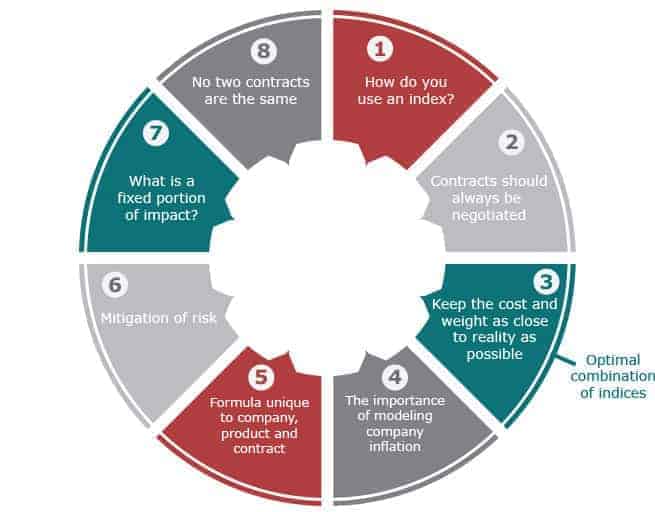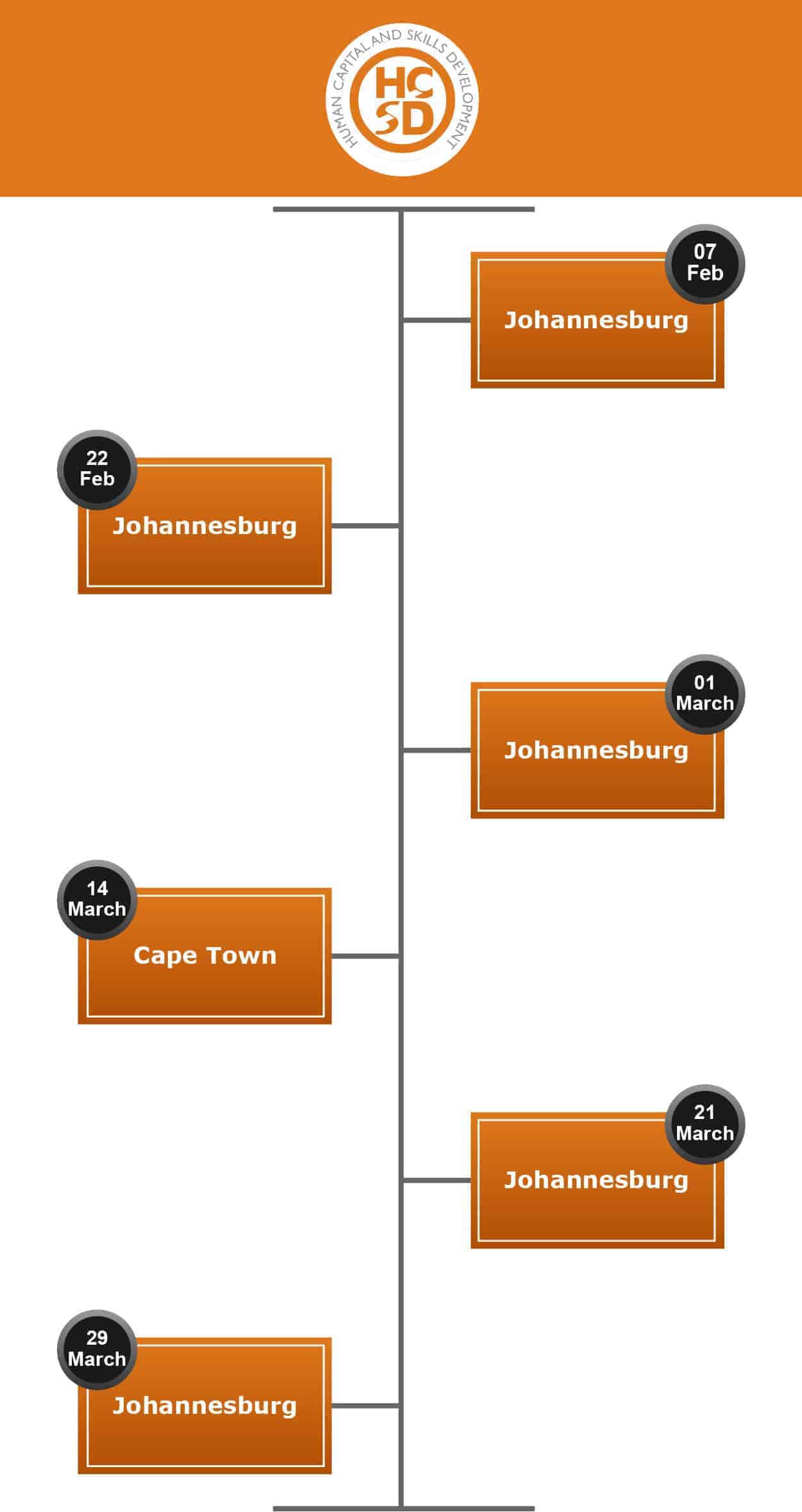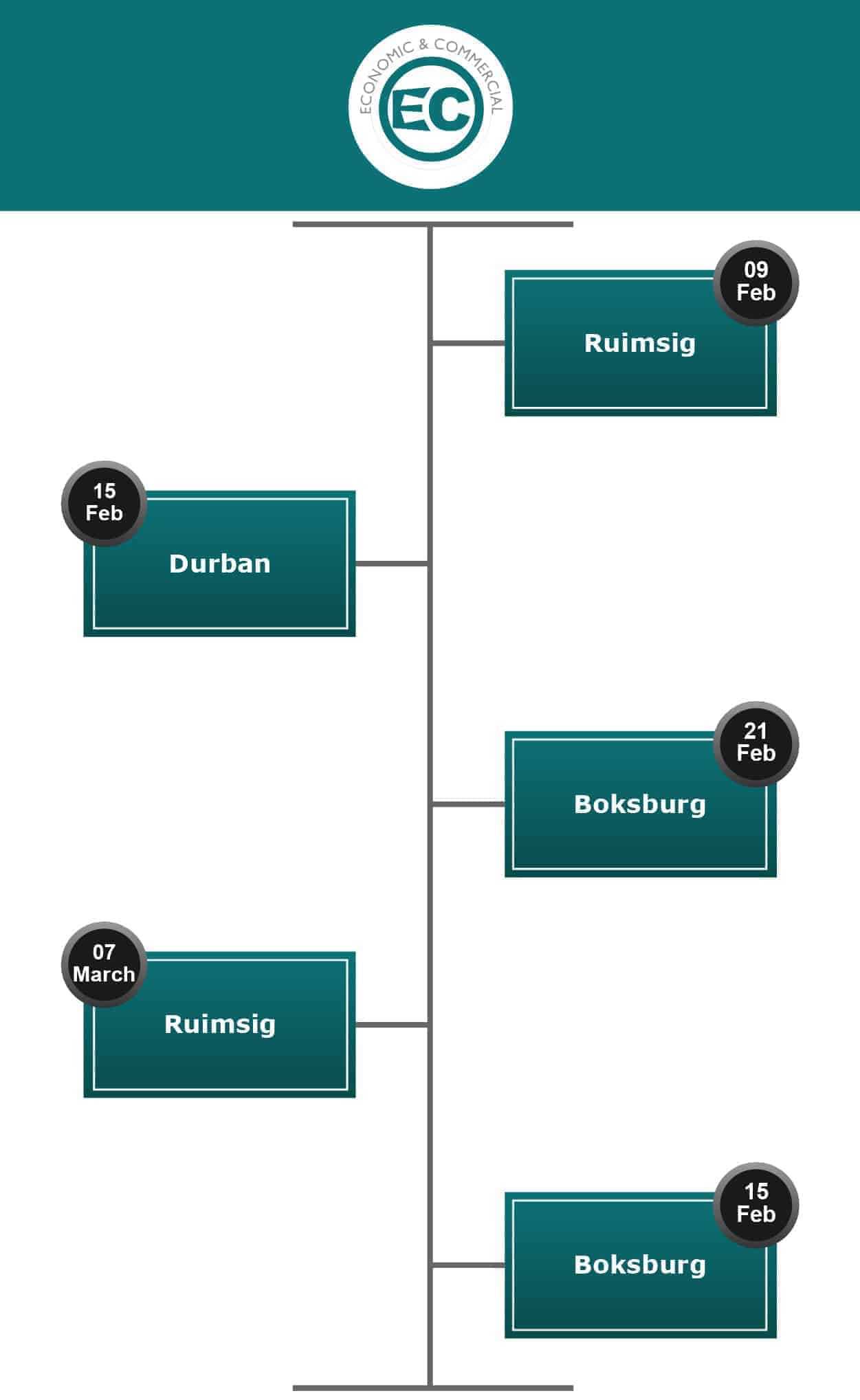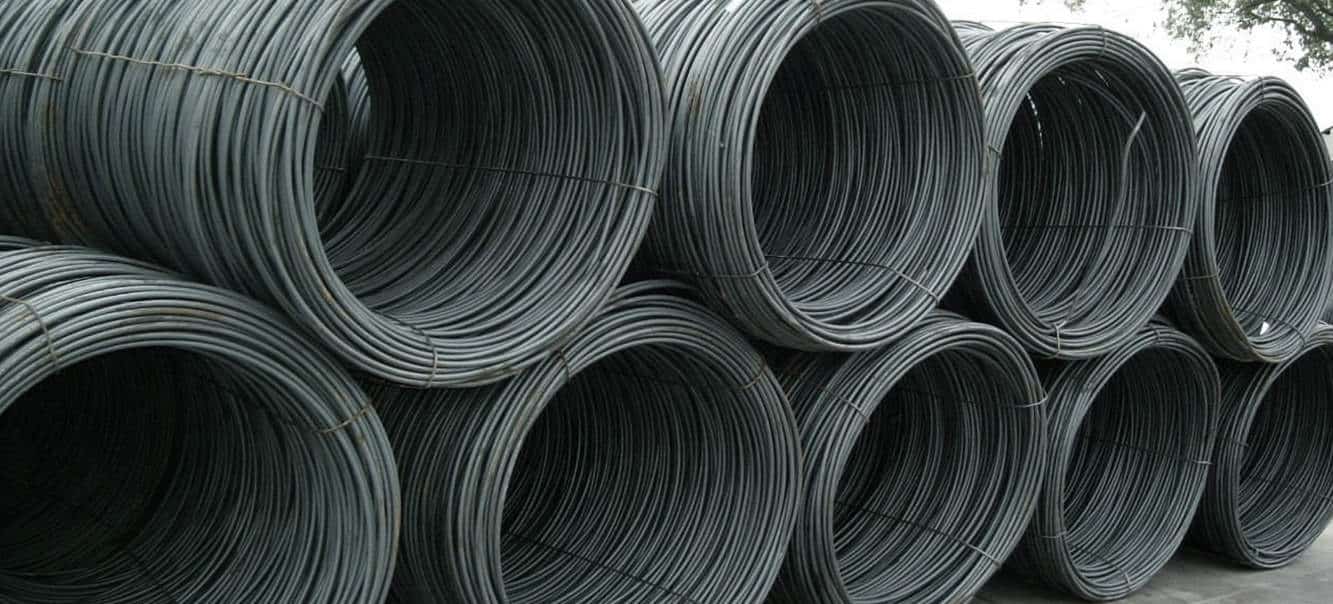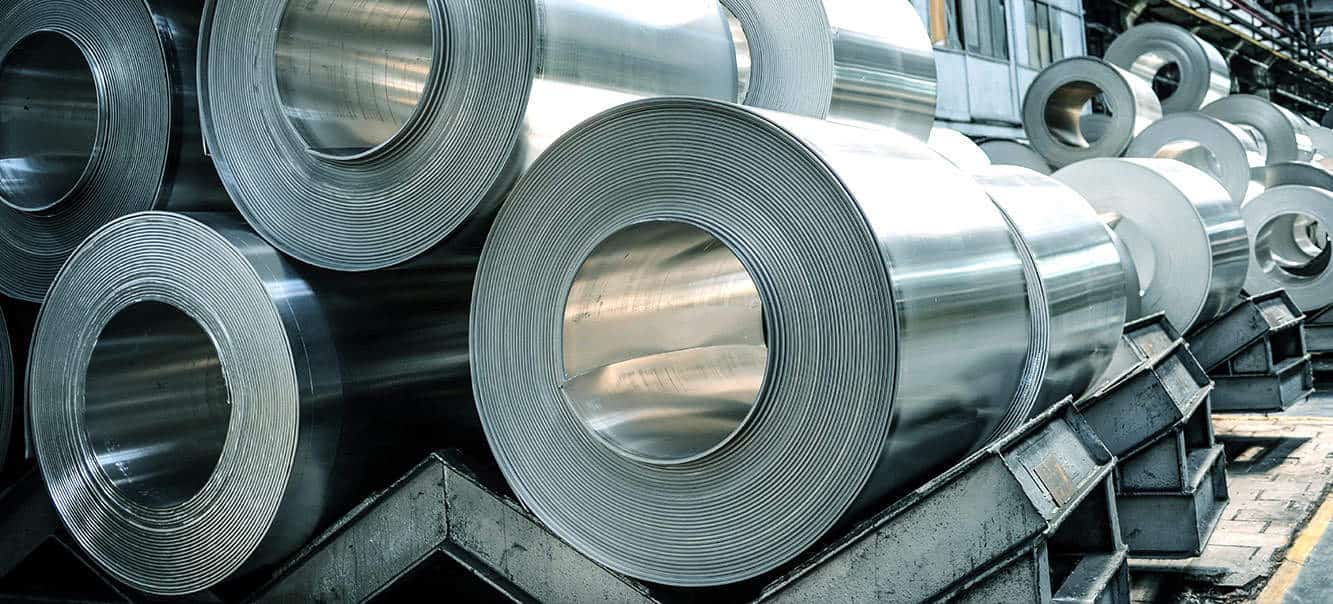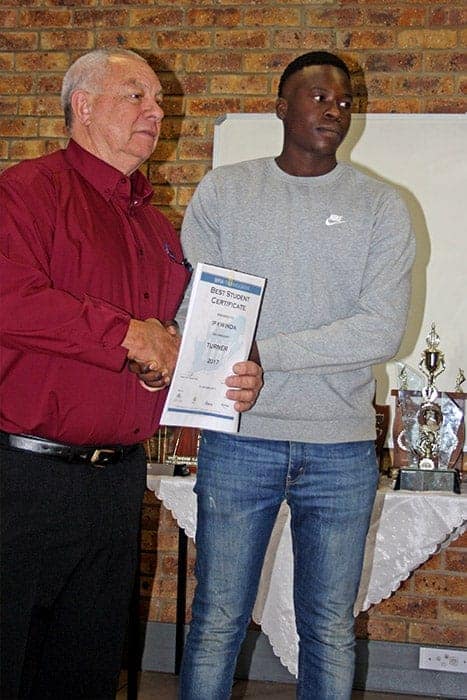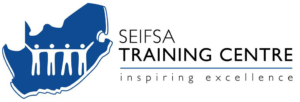INFOGRAPHIC: 8 Things You Need to Understand About Contract Price Adjustment
February to March - Skills Development Planning and Reporting
February to March - Theory and Calculation of Contract Price Adjustment
METALS AND ENGINEERING SECTOR EXPECTED TO RECORD A SECOND CONSECUTIVE YEAR OF GROWTH IN 2018
JOHANNESBURG, 2 FEBRUARY 2018 – After three long years of poor performance, the metals and engineering sector is expected to grow for a second consecutive year in 2018, the Steel and Engineering Federation of Southern Africa (SEIFSA) said today.
Speaking at the launch of its authoritative State of the Metals and Engineering Sector Report 2018 to 2019 in Johannesburg this morning, SEIFSA Chief Economist Michael Ade said the metals and engineering sector – which has been in decline for three consecutive years – is poised for 1,1% growth this year, following an impressive 2,7% growth in 2017.
Dr Ade said this prognosis is supported by global economic growth, which remained fairly robust in 2017, aided by a rebound in investment and trade, against the backdrop of benign financing conditions, generally accommodative policies, improved confidence and the dissipating impact of the earlier commodity price collapse.
He said 2017 was a much better year for the metals and engineering sector, which rebounded from the recession in preceding years, registering a 2.7 percent growth “despite facing serious structural challenges”. He said the momentum was expected to continue in 2018.
“Despite the current potential to improve on margins in the M&E sector being fragile due to domestic headwinds, all indications are that the sector will record another increase in growth during 2018, barring any major disruptions to production,” Dr Ade said
He said commodity prices recovered last year and are expected to gain momentum in 2018, thereby strengthening exports and improving growth prospects for commodity exporters in emerging markets (along with enhanced capital inflows).
“However, it is unclear how long the positive outlook will continue, given the volatility in commodity prices,” he said.
Dr Ade said downside risks include disorderly financial market movements, negative effects of borrowing costs, as well as rising trade protectionism or geo-political risk which could also negatively affect confidence, trade and overall economic activity.
Dr Ade said the prognosis also aligned with the outlook for an improving – but subdued – domestic growth underpinned by positive projections for fixed capital formation, better domestic trade conditions and reduced exchange rate volatility.
“Our position is also influenced by positive growth prospects for key industries which are important markets for the M&E sector’s intermediary products and are crucial in the sector’s value chain,” Dr Ade said.
However, he cautioned that the recent downgrade of South Africa’s sovereign credit ratings to junk status by Fitch and Standard and Poor’s would have the propensity of increasing borrowing costs and the general cost of doing business, thus negatively affecting production and fixed investment into the sector and adding to its structural challenges.
The pertinent dynamics of the sector are reviewed in detail in the current edition of SEIFSA’s State of the Metals and Engineering Sector Report 2018 to 2019, which SEIFSA CEO Kaizer Nyatsumba described as “brimming with invaluable information on the sector’s historical and future performance”. The publication provides an update of the sector and invaluable insights to stakeholders, including potential investors.
“I have not the least doubt that all who closely monitor the fortunes of the broad metals and engineering sector and its sub-sectors in Southern Africa, and those with even a passing interest in it and its related sectors, will find the State of the Sector Report invaluable,” said Mr. Nyatsumba.
Issued by:
Nuraan Alli
Sales Manager
Tel: (011) 298 9436 and 083-788-1380
Email: nuraan@seifsa.co.za
Web: www.seifsa.co.za
SEIFSA is a National Federation representing 23 independent employers. Associations in the metals and engineering industries, with a combined membership of 1600 companies employing around 200 000 employees. The Federation was formed in 1943 and its member companies range from giant steel-making corporations to formed in 1943 and its member companies range from giant steel-making corporations to micro-enterprises employing few than 50 people
Skills Development and Planning Seminar 2018
SEIFSA is proud to announce that we will be hosting SEIFSA’s Annual Skills Development Planning and Reporting Seminar on 13 February, 2018. We have once again managed to harness a group of dynamic and well informed captains of industry to present various relevant topics at a micro and macro level that will benefit both you and your organisation.
• Christia Uys, Weir Minerals;
• Greg Mitchell, Honeycomb BBBEE;
• Winston Adams, Merseta;
• Rupert Ndlovu, SARS;
• Melanie Mulholland, SEIFSA
Who should attend?
• Members who are new to the skills development reporting requirements for pivotal and mandatory grants and who wish to ensure that they are at the forefront of effective implementation.
• Skills development facilitators, human resource managers, training managers, managers, owners and managers of small and medium enterprises, experienced managers who would like to brush up on their knowledge and get to grips with the NEW Seta Management System.
The workshop will cover
• Understand the merSETA criteria and requirements for submission of the skills planning and reporting templates due on 30 April 2018
• Highlight the benefits and uses of the NEW Seta Management System (SMS) for effective skills planning and reporting
• Work through the NEW Seta Management System templates including the PIVOTAL Plan and PIVOTAL Training Report
• Understand the labour representative’s role in the approval process
• Discuss the Training Committees’ role and responsibilities for the 2018/2019 mandatory and pivotal grant submission requirements
• Highlight and align current policy expectations and implementation objectives
• Share insights with colleagues and peers
• Participate in group exercises and discussions to gain from the best practice experiences of other companies. Network with other skills development facilitators so that you can handle skills development planning and implementation with confidence.
Programme
08h00 – 09h00: Registration and refreshments
09h00 – 09h15: Welcome, introduction and setting the scene. Melanie Mulholland, SEIFSA Human Capital & Skills Development Executive
09h15 – 09h45: Human Resource Development in the metals & engineering environment. A company perspective. Christia Uys – HR, Weir Minerals Africa (Pty) Ltd
09h45 – 10h15: The BBBEE codes and its impact on skills development. Greg Mitchell – Honeycomb (BBBEE Agency)
10h15 – 10h45: Mid-morning refreshments
10h45 – 11h15: Maximising the Tax Benefits for Skills Development. Rupert Ndhlovu – SARS, Regional Manager
11h15 – 12h00: merSETA Perspective for 2018/19 reporting year. Winston Adams, merSETA
12h00 – 12h45: Lunch
12h45 – 14h00: Workplace Skills Plan (WSP), Annual Training Report (ATR) and PIVOTAL Plan and Report Templates, Guidelines and SMS – Melanie Mulholland, Human Capital & Skills Development Executive
14h00: Closure
SEIFSA IS WORRIED BY THE ANNOUNCEMENT OF THE U.S DEPARTMENT OF COMMERCE
SEIFSA IS WORRIED BY THE ANNOUNCEMENT OF THE U.S DEPARTMENT OF COMMERCE IN ITS ANTIDUMPING DUTY INVESTIGATIONS OF IMPORTS OF CARBON AND ALLOY STEEL WIRE ROD FROM SOUTH AFRICA
JOHANNESBURG, 11 JANUARY 2018 – The Steel and Engineering Industries Federation of Southern Africa (SEIFSA) is very worried by the recent announcement of the U.S. Department of Commerce’s affirmative final determinations in the antidumping duty (AD) investigations of imports of carbon and alloy steel wire rod from South Africa and Ukraine.
This is following an initial parallel investigations launched in October 2017, to determine if American producers have been harmed by carbon and alloy steel wire rod imports from Italy, the Republic of Korea, South Africa, Spain, Turkey, Ukraine and/or the United Kingdom, by both the U.S Department of Commerce and the U.S International Trade Commission (ITC).
The AD law provides U.S businesses and workers with a transparent, quasi-judicial, and internationally accepted mechanism to seek relief from the market distorting effects caused by injurious dumping of imports into the United States, establishing an opportunity to compete on a level playing field. For the purpose of AD investigations, dumping occurs when a foreign company sells an imported product in the United States at less than fair value.
“In the South Africa investigations, the U.S. Department of Commerce assigned a dumping rate of 142.26 percent for the collapsed entity composed of ArcelorMittal South Africa Limited, Scaw South Africa (PTY) Ltd (also known as Scaw Metals Group), and Consolidated Wire Industries, based on adverse facts available due to its failure to respond to Commerce’s request for information. Davsteel Division of Cape Gate (Pty) Ltd., the other mandatory respondent, was found to have no shipments of subject merchandise during the period of investigation. All other producers/exporters in South Africa have been assigned a dumping rate of 135.46 percent,” said SEIFSA’s Chief Economist Michael Ade.
Upon publication of the final affirmative AD determinations, Commerce will instruct U.S Customs and Border Protection (CBP) to collect cash deposits equal to the applicable final weighted-average dumping rates.
SEIFSA is extremely concerned that the latest developments have the potential of further dampening production in the local steel industry, reducing steel exports to the U.S and stifling the steel industry of much needed foreign reserves. “This is especially given that in 2016, imports of carbon and alloy steel wire rod by the U.S from South Africa was valued at an estimated $7.1 million,” Dr Ade said.
The ITC is scheduled to make its final determination on or about of the 22nd of February 2018. If the ITC makes affirmative final determination that imports of carbon and alloy steel wire rod from South Africa and/or Ukraine materially injure, or threaten material injury to, the domestic industry, the U.S Department of Commerce will issue AD orders. If the ITC makes negative determinations of injury, the investigations will be terminated.
SEIFSA will continue to monitor the situation closely, in light of the final determination by the ITC.
Issued by:
Jackie Molose
Marketing, Sales and Communications Executive
Tel: (011) 298 9411 and 082 602 1725
Email: jackie@seifsa.co.za
Web: www.seifsa.co.za
SEIFSA is a National Employers Federation representing 23 independent employer Associations in the metals and engineering industries, with a combined membership of 1600 companies employing around 200 000 employees. The Federation was formed in 1943 and its member companies range from giant steel-making corporations to micro-enterprises employing few than 50 people.
SEIFSA WELCOMES IMPROVEMENT IN METALS AND ENGINEERING PRODUCTION
JOHANNESBURG, 12 DECEMBER 2017 – The latest preliminary production data for October 2017 for the metals and engineering (M&E) sector released by Statistics South Africa today shows an increase in output for the sector, said the Steel and Engineering Industries Federation of Southern Africa (SEIFSA).
Chief Economist Michael Ade said that the production in October 2017 for the sector increased by 13.4 percent on a year-on-year basis, after adjusting for the sectoral weights, following a lower-than-expected annual performance in September 2017.
Dr Ade said: “The Metals and Engineering (M&E) sub-components of the Manufacturing sector also performed well on a month-on-month basis, recording an increase of 8.5 percent in October 2017 when compared to September 2017. The increase in production in October 2017 in the M&E sector is generally in line with the broader Manufacturing Production increase of 2.2 percent on a year-on-year basis in October 2017, compared with October 2016,”.
He said the improvement in the M&E sector production figures is encouraging, especially given that all the sub-sectors performed well, recording positive output levels. The outstanding performers were the bodies for motor vehicles, trailers and semi-trailers, the special purpose machinery, the plastic products and household appliances categories.
“This is indeed good news for the M&E sector as it sets the basis for increased capacity utilisation and further growth in the sector, thereby eventually attracting new investment. What is even more encouraging is that the performance in October 2017 was 5.4 percent better than that of September 2017, which shows an acceleration of the improvement on a month-to-month basis,” said Dr Ade.
He said that even though the expectation is for the sector to record better cumulative growth by the end of quarter 4 of 2017, instability in the data is still evident, given that production in September was 1.2 percent lower than in August 2017. He said although the sector contributes only a small portion of gross domestic product, it is highly sensitive to interest rates and consumer demand.
“The improved performance in the M&E sector in October 2017 aligns with forward- looking indicators for the industry. The South African Chamber of Commerce and Industry (SACCI) Business Confidence Index (BCI) rose to 95.1 percent in November 2017, from 92.9 percent in October. The Purchasing Managers’ Index (PMI) rose to 48.6 percent in November 2017, from 48.3 percent in October 2017 and 45.1 percent in September 2017. This is generally in line with the increasingly optimistic outlook for the sector, despite the index still trending below the required 50 benchmark level,” said Dr Ade.
He added that although there is an increase in output in the M&E sector, the sector’s concerns and challenges still remain. He said the sector is still under tremendous pressure stemming from structural problems, including increasing imported input costs, volatile cost of production and poor export competitiveness as companies struggle to take full advantage of increasingly favourable global demand conditions.
Issued by:
Jackie Molose
Marketing, Sales and Communications Executive
Tel: (011) 298 9411 and 082 602 1725
Email: jackie@seifsa.co.za
Web: www.seifsa.co.za
SEIFSA is a National Federation representing 23 independent employer Associations in the metals and engineering industries, with a combined membership of 1600 companies employing around 200 000 employees. The Federation was formed in 1943 and its member companies range from giant steel-making corporations to micro-enterprises employing few than 50 people.
RISING UNEMPLOYMENT A SIGN OF “A DEEPLY TROUBLED ECONOMY”, SAYS SEIFSA
JOHANNESBURG, 12 DECEMBER 2017 – The employment data released by Statistics South Africa (StatsSA) today indicates a deeply troubled economy and is a serious cause for concern, the Steel and Engineering Industries Federation of Southern African (SEIFSA) said.
SEIFSA Chief Economist Michael Ade said the StatsSA data showed that the manufacturing sector, of which the metals and engineering (M&E) sector is part, lost 0.4 percent of total employment (5000 jobs) in quarter 3 of 2017, with employment decreasing from 1 181 000 in June to 1 176 000 in September 2017.
Dr Ade said the quarterly employment statistics released by StatsSA showed that 31 000 jobs in total were lost between the second quarter (Q2) of 2017 and the third quarter (Q3) of 2017, amounting to a 0.3 percent decrease. Between the third quarter (Q3) of 2016 and the third quarter (Q3) of 2017, an alarming total of 83 000 jobs in total were lost, representing 0.9 percent of jobs lost.
He said that “Given that the recently published real GDP figure for the 2017 quarter 3 (Q3), revealed a stronger-than-expected growth relative to quarter 2 (Q2), the decrease in employment for the same period highlights subdued domestic demand conditions and structural challenges faced by most industrial sectors. Of specific concern is that, despite the positive contribution made by the manufacturing sector towards an improvement in real GDP growth, which contributed
4.3 percent in quarter three of 2017, the benefits did not translate to an increase in employment,” he said.
Dr Ade said that the data confirmed a direct negative correlation between employment numbers and manufacturing production, as companies chose to utilise existing excess capacity and more capital in productive processes.
He said the 31 000 jobs lost in quarter three (Q3) in 2017 relative to quarter two (Q2) of 2017 represented the net number resulting from decreases in most sectors and increases in only two sectors. Employment in the primary sector – as exclusively represented by formal mining employment – had decreased by 9 000, while the secondary sector had recorded a net employment decrease of 2 000 and the tertiary sector had recorded a net decrease of 20 000 in quarter three (Q3) in 2017.
“These are worrying numbers, given the existing trade-off between employment and economic growth. This highlights the need for multiple approaches to the unemployment problems facing South Africa. Employment levels are generally supposed to increase or decrease on the back of higher or lower economic activity, and the current employment numbers do not paint an encouraging picture,” said Dr Ade.
He said that while employment in industrial production generally decreased, the numbers for the construction sector increased by 4000 from quarter two (Q2) of 2017 to quarter three (Q3) of 2017. He said while employment in the construction sector generally seemed to be volatile, largely affected by the number of projects in progress, the up-take in employment in the sector in the run-up – driven by a slight increase in construction works – to the festive season was encouraging.
He attributed the decreased employment in the manufacturing sector largely to volatile output and structural challenges inhibiting industries from benefiting from improving global demand and employing more labour. He said this was compounded by both frictional and seasonal unemployment dynamics.
Dr Ade said the country desperately needs positive business sentiment, better consumer and business confidence as well as improved investor confidence to trigger new investments to create jobs in manufacturing and across all industrial sectors in the new year.
Issued by:
Jackie Molose
Marketing, Sales and Communications Executive
Tel: (011) 298 9411 and 082 602 1725
Email: jackie@seifsa.co.za
Web: www.seifsa.co.za
SEIFSA is a National Federation representing 23 independent employer Associations in the metals and engineering industries, with a combined membership of 1600 companies employing around 200 000 employees. The Federation was formed in 1943 and its member companies range from giant steel-making corporations to micro-enterprises employing few than 50 people.
TRAINING OUR FUTURE ARTISANS
SEIFSA Training Centre gets youth fit and ready for the industry
The Steel and Engineering Industries Federation of Southern Africa (SEIFSA) Training Centre recently oversaw the graduation of 40 artisans at its world-class facility in Benoni, South Africa.
The next generation of electricians, fitters, turners, boilermakers, and welders were presented with their certificates on Friday, 1 December 2017 to the joy of their families, sponsors and the Centre’s staff at ceremony held at the world-class facility in Benoni, South Africa.
SEIFSA Training Centre Operations Manager Desmond Uithaler proudly said: “We the have capacity to train 400 candidates per year, hence we can make a significant contribution towards the reduction of the shortage of the 12,500 artisans that South Africa needs on an annual basis”.
The SEIFSA Training Centre provides a steady stream of ready-to-work and skilled graduates for companies such as Rotek, Macsteel, Aberdare and BCE, amongst others.
“This fact goes to the heart of why SEIFSA recognised the vital need to establish the Centre in the first place. Our members are encouraged to find creative ways to bridge the skills gap and source a supply of well-trained young artisans,” said Chief Executive Officer Kaizer Nyatsumba.
The main prize winner on the day was 28-year-old Moses Negoma, who won Best Overall Student as a Fitter and Turner as well as a Certificate of Achievement. Originally from Limpopo, Mr Negoma was supported by BCE Engineering and is now completing his In-Service Training with the company.
Congratulating Mr Negoma on the award, Mr Nyatsumba remarked on the importance of getting young people interested in being artisans: “The average age of an artisan in South Africa is 54, which means that 70 percent of artisans currently employed will retire in the next five to six years. New blood in the industry is absolutely vital for our economy, and that is why we should all be excited about initiatives such as this one. We will certainly be highlighting these achievements to the companies that make up the SEIFSA membership,” said Mr Nyatsumba.
The occasion was joyous and characterised by music, dancing, comedy and the inspirational words of guest speaker Patrick Metswi, Executive of Human Resources at Murray & Roberts. He emphasized the message of lifelong learning: “View your certificate as a key to unlock future success. Don’t settle for anything, but giving your very best, because that is our measurement. M&R is looking for the very best. Go out and knock on as many doors as possible and don’t give up.
Why Should You Attend Employment Equity Workshops at SEIFSA
Employment equity training is essential if you want to stay ahead of the competition and ensure that you prevent your company being fined up to 10% of your annual turnover for non-compliance. Attending workshops presents your organisation with the opportunity to educate its managers on how to work together effectively for a constructive business transformation process. The changed Employment Equity legislation has brought about several changes in definitions, the target of audits and turnover threshold. As a result, not keeping up with the changes represents a higher risk to the business. Moreover, an organisation stands to miss the business benefits of a fully functioning employment equity process.
Employment equity workshops at SEIFSA have their aim at assisting companies to administer and set-up employment equity plan, assess diversity programs and at the same time cover the most recent amendments of the Employment Equity Act of 1998. The SEIFSA workshop is an interactive programme. Managers and delegates will receive practical guidelines about communication and skills development to ensure full compliance and implementation of the EE Act. The programme provided is further designed to offer learning through self-testing, provide relevant information on labour and management’s roles and responsibilities. It also fosters discussions; customised to ensure relevance to your organization’s environment. Does the SEIFSA workshop sound like an intervention that could assist your company to be more productive? Here are reasons why it’s worth investing your precious time on a SEIFSA Employment Equity workshop.
Company and Employee Benefits
Expert knowledge
The SEIFSA workshop offers you the golden opportunity to meet your business idols. When you are sharing the same space with like-minded individuals or people you admire, your chances of gaining expert knowledge are greatly improved. Even getting a few minutes to have a one-on-one conversation with a professional allows you to pitch your ideas, ask for insight or feedback. The workshop will give you extensive exposure to employment equity through discussions and presentations led by experts. You can leave the seminar with new ideas, a wide range of knowledge and approaches that will make your organisation more efficient.
Networking opportunities
Attending the conference is an opportunity for attendees to get connected. Mix and mingle, strengthen existing relationships and form new ones. You may make a connection and get up close and personal with the perfect prospect. You will be surprised to find yourself sitting next to your mentor or future customer. Interacting with people who share your interests will offer chances for you to engage in constructive debates, share experiences and prospects. Meeting new people will not only provide solutions to common problems but will also offer encouragement.
Relationships created during the SEIFSA workshop have been known to continue into useful professional connections even after the workshop is over. Or, if you don’t attend, maybe a representative from a rival organization will be seating on your seat.
Renewed motivation
Regardless of the type of business, it is easy to get caught up in the daily corporate grind and lose excitement or motivation for your business interests. Employment Equity training workshop at SEIFSA provides intensive study hence the perfect chance to get way and rekindle your enthusiasm. As a result, attending the workshop will result in increased productivity and intellectual growth.
New tools and skills development
The problem with many managers is that they believe that they are always well prepared and have solutions at their fingertips. And maybe they do. However, employment equity can be overwhelming, and you often can’t crack all the data. The SEIFSA workshop helps curate new ideas to help you improve your thoughts. It’s possible that you can easily access information regarding employment equity online, but a seminar helps cut through the clutter to find the perfect solution for each unique organisation. In addition, the workshop has tools that you probably haven’t seen yet. New tools are faster and always make your company less prone to costly mistakes.
New space
Ever considered why many companies are embracing the concept of off-site meetings? It’s because research indicates that lack of change of perspective inhabits new ideas and fresh thinking. A day out of the office can always spark you and your employees to new ideas that can propel your organisation towards business growth. Besides, SEIFSA conferences are fun and add a layer of enjoyment to employment equity training by incorporating a social aspect into your learning. Don’t miss out on a great opportunity.
Stay relevant and updated
It is every organisation’s goal to stay ahead of the curve. However, to do this, it is imperative to stay updated. Attending the SEIFSA workshop is one of the smart moves you can make for the future of your organisation. It is designed to give you a plethora of the latest trends and usable content. The workshop will be sure to keep you plus your employees up-to-date with the latest development strategies and other changes that are occurring within your industry.
Increased employee loyalty
The idea behind a workshop is that delegates take what they learn back to the company and share with their workmates. After attending the SEIFSA workshop, you will have the everything you need to educate your team and ultimately improve the company’s bottom line. Equipping your team with the right skills boosts moral which in turn boosts productivity.
Self development
Seminars and conferences force individuals to break out of their comfort zones. By attending the workshops at SEIFSA, you are investing in yourself, your team as well as your company. The workshop offers the type of action you need to boost your confidence.
Risks of Employment Equity Act non-compliance
Did you know that the Employment Equity (EE) is among the top challenges facing employers in South Africa? As a result, it should not be underestimated. The department of labour made some amendments to the Employment Equity Act implementing harsh penalties on companies that fail to comply. Failure to comply with the Act will result in a fine ranging from 2% to 10% of an organisation’s annual turnover. The Act stipulates several guidelines to employers. Don’t delay, learn all about EE at SEIFSA workshop and save yourself the financial and legal embarrassment.

